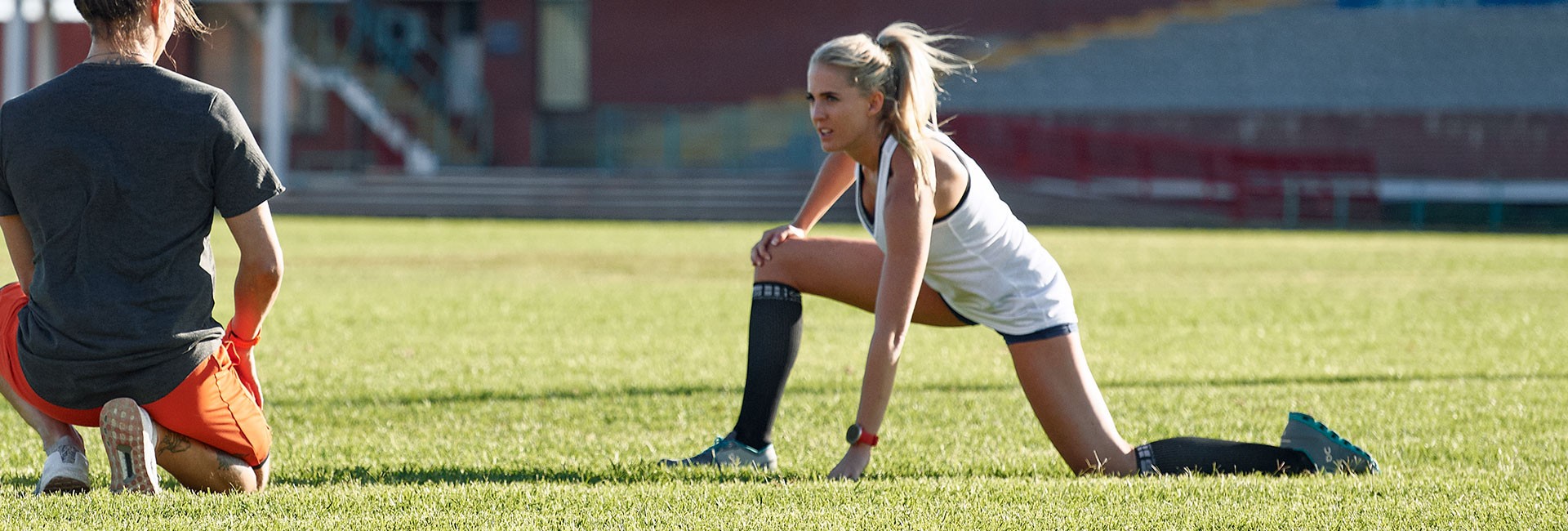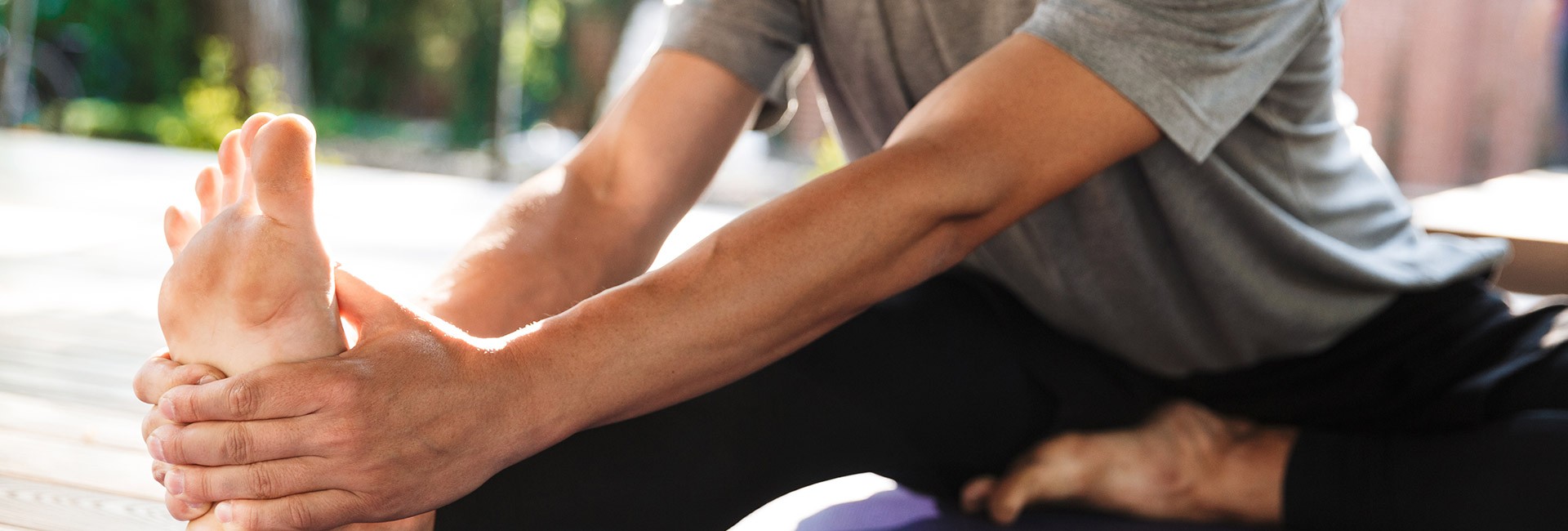Raise your hand if you know you should stretch. Now raise your other hand if you know you should stretch, but still never actually do it.
The biggest mistake runners make when it comes to stretching is not doing it.
“The biggest mistake runners make when it comes to stretching is not doing it,” says Sarajean Rudman, M.S., M.A., a 500-hour certified yoga instructor at the Kripalu Center for Yoga and Health and an avid runner. “It’s so important to stay flexible in order to perform injury-free. Runners who focus solely on running and ignore cross-training and stretching are at a huge risk of injury.”
“They become overly tight in certain areas of the body and overly weak in others,” Rudman explains. “And if you’re overly tight from never working on mobility, you may have to work harder to stride longer and move faster than if your body was moving with more efficiency through its full range of motion. This can leave you fatigued more quickly and underperforming overall.”
Here, Rudman answers everything you need to know about stretching for runners.
Stretching isn’t something you should only do before or after a run
Beyond not stretching at all, another common mistake Rudman sees when it comes to stretching is runners only doing it immediately before or after a workout.
“That’s simply not cutting it,” she says. “I see this all too often. A little dynamic limbering and a few hamstring stretches before a run, then some long holds in a lunge or pigeon pose after, and you’re done. But that won’t do it.”
When it comes to stretching, frequency trumps duration. Even if you stretch for 20 minutes before and after your run, spending the rest of the day doing nothing will ensure those effects wear off quickly and have less of an effect on overall injury prevention.
You should start your day with dynamic stretches, then do them again at midday and before bed.
“Ideally,” Rudman says, “you should start your day with dynamic stretches, then do them again at midday and before bed. “Keep the body moving through its full range of motion for short periods of time throughout the day to build a strong, flexible, less injury-prone body,” she says.
“Save the long holding stretches for deep relaxation time and before bed. They’re a great way to relieve your body of the tension of the day and invite a good night’s sleep.” Work on flexibility seven days a week for maximum benefits, comfort, and results.
Opt for dynamic stretches over static stretches – at least most of the time
A dynamic stretch is one that brings about flexibility through movements, such as arm circles or leg swings. A static stretch is one where you find the full length of the muscle and hold it for 30–90 seconds.
“Long-lasting flexibility will truly only be built through dynamic stretching, which requires muscular effort and takes the joint through its full range of motion while bearing weight,” Rudman says.
“Static stretching may feel good in the moment, but it can have certain downfalls,” Rudman says. “Static stretches are sort of like a massage. Most of the benefit lies in the feel-good moments around the actual procedure. When you get up and walk away, your muscle goes back to being contracted and much of the lengthening wears off.”
Plus, static stretches can actually aggravate inflamed areas even more. “When you have shin splints, for example, it may feel good to hold the anterior tibialis in a long stretch, but you’re actually creating more little tears in the fascia surrounding it, and could be prolonging the healing process.”
If stretching hurts, don’t do it
Stretching shouldn’t be a hurts-so-good experience.
“There’s a difference between finding your edge and pain,” Rudman says. “When going into a stretch, find your edge. That’s where you feel sensation but it doesn’t hurt.” Holding there for a while allows the fascia – or connective tissue around the muscle – to stretch out slowly, breaking down adhesions that may be hindering your flexibility.”
“But if you go beyond the point where you can’t breathe, see straight, or hold a conversation, back off,” Rudman stresses. “Find that edge again and quickly step away from the pain. Going beyond your edge can lead to injury, inflammation, decreased performance, and muscular inhibition in reciprocal parts of your body.”
Don’t just do a few quick quad stretches and call it a day
Rudman suggests limbering up with dynamic and static stretches before and after your run, focusing mostly on dynamic stretches.
“Pulse in and out of a hamstring stretch, in and out of a lunge, and do a few sun salutations, coming in and out of cobra poses and downward dog,” she says. “And be careful not to overstretch a warmed-up muscle. That can come back to bite you later on.”
If quad stretches are your favorite and you simply can’t live without them, Rudman says to consider the quad’s counterpart, too. “Make sure to always stretch the front and back of a muscle group,” she explains. “So if you’re stretching the back, make sure you also stretch the chest and abdomen. That way you don’t end up overly tight in one place and overly loose in another.”
Sarajean’s Stretching for Runners Dos and Don’ts
✔ DO stretch daily.
❌ DON’T focus just on static stretching.
✔ DO stretch frequently, not just for one long session once per day.
❌ DON’T overstretch one muscle group.
✔ DO stretch the front and back muscles evenly.
❌ DON’T stretch until it hurts.
✔ DO remain aware as you stretch. You should be able to breathe and have a conversation.
❌ DON’T skip stretching altogether to get a longer run in.
✔ DO utilize mostly dynamic stretches moving your joints through their full range of motion.
❌ DON’T do the same thing every day.
✔ DO utilize foam rolling and self-myofascial release techniques to eliminate connective tissue adhesions that can lower range of motion and lead to injury.
❌ DON’T try to stretch an injury. Always seek medical attention and physical therapy, or you could be out of the game longer than expected.
✔ DO what feels good in your body.
❌ DON’T get too caught up in getting ‘good’ at stretching. Do a little every day, and your body will get where it needs to go.
If you liked this post, don’t forget to share so that others can find it, too.
Or give it a thumbs up!
I like this article
Please note that the information provided in the Polar Blog articles cannot replace individual advice from health professionals. Please consult your physician before starting a new fitness program.






